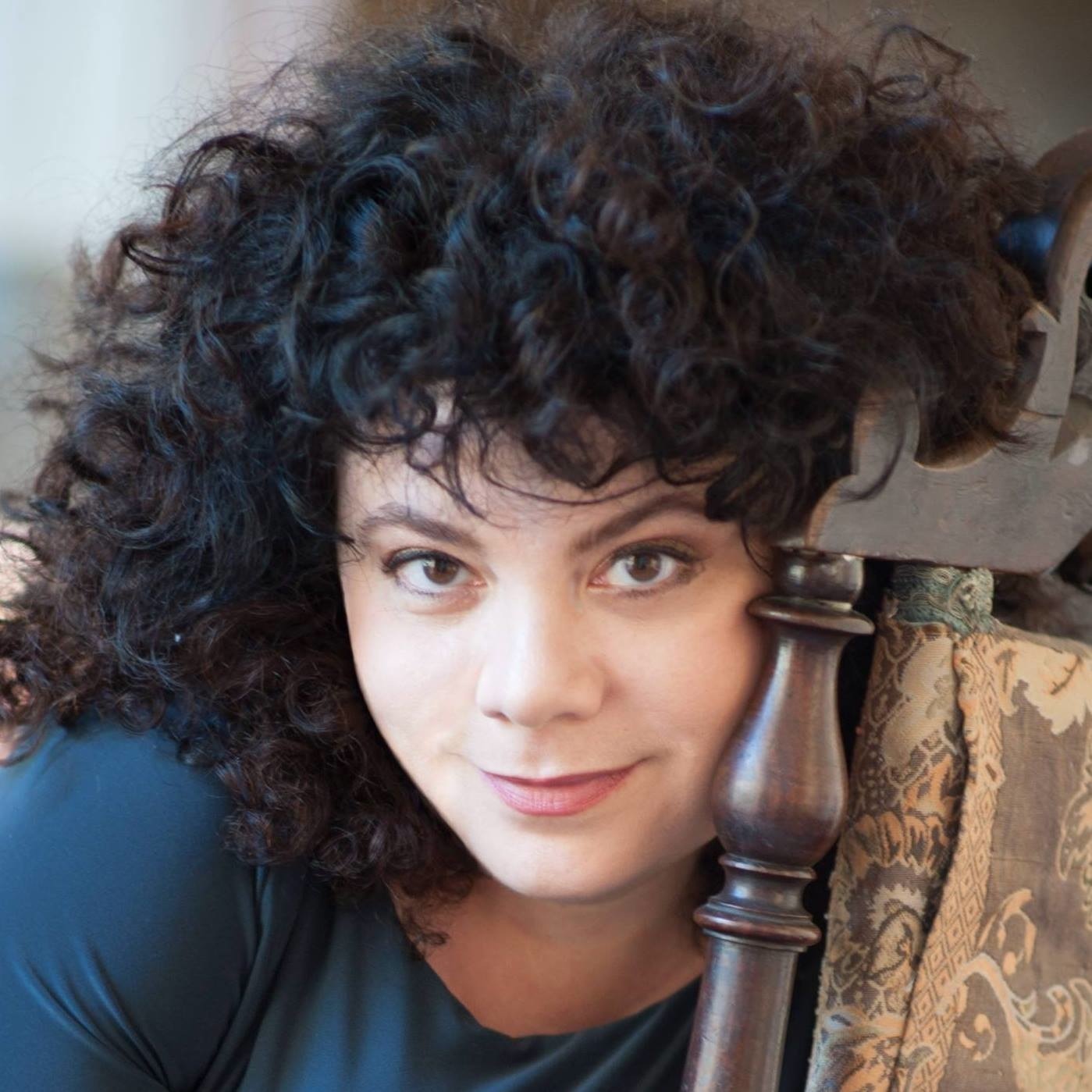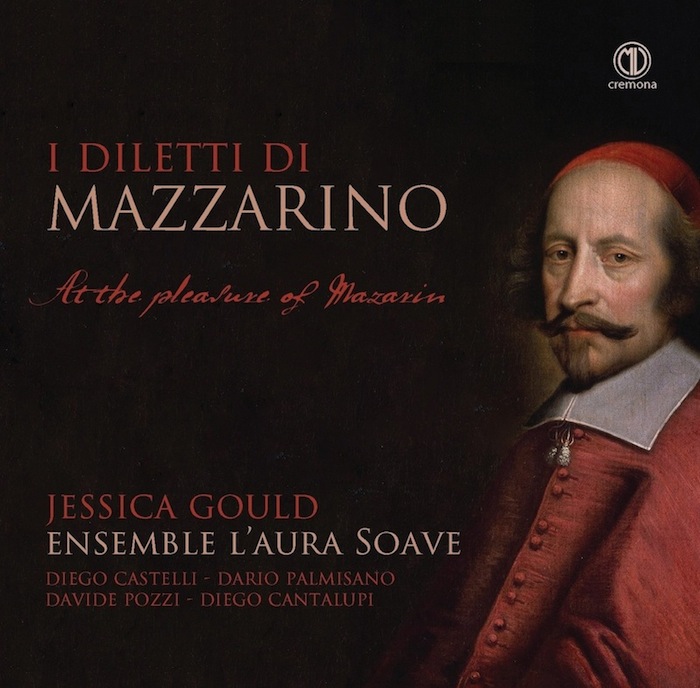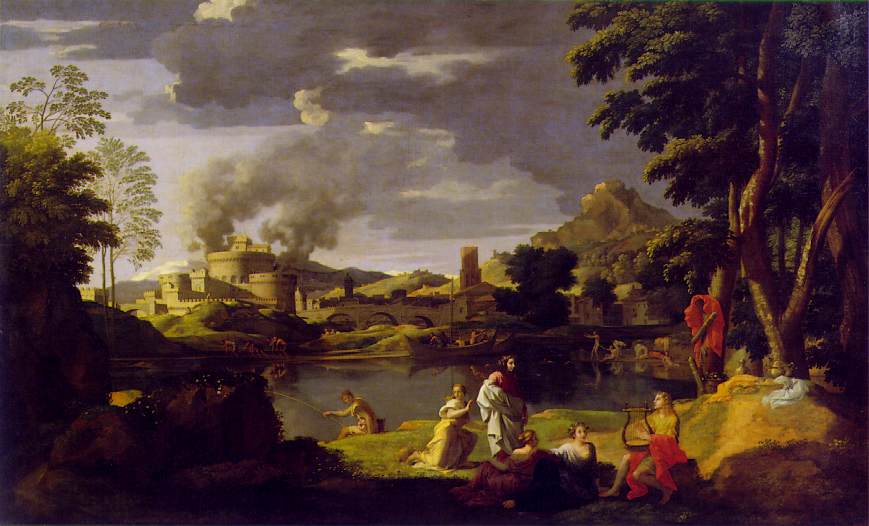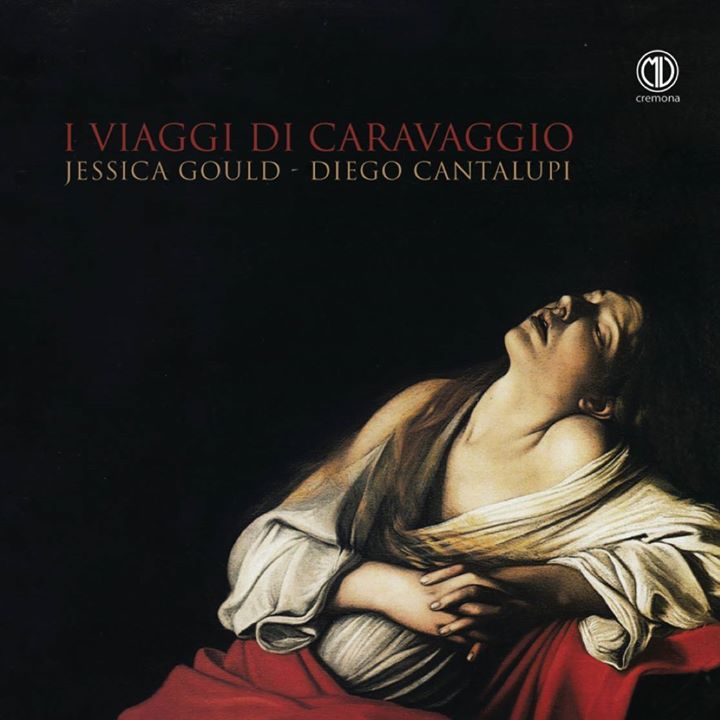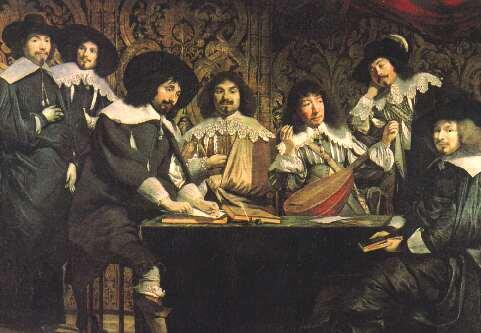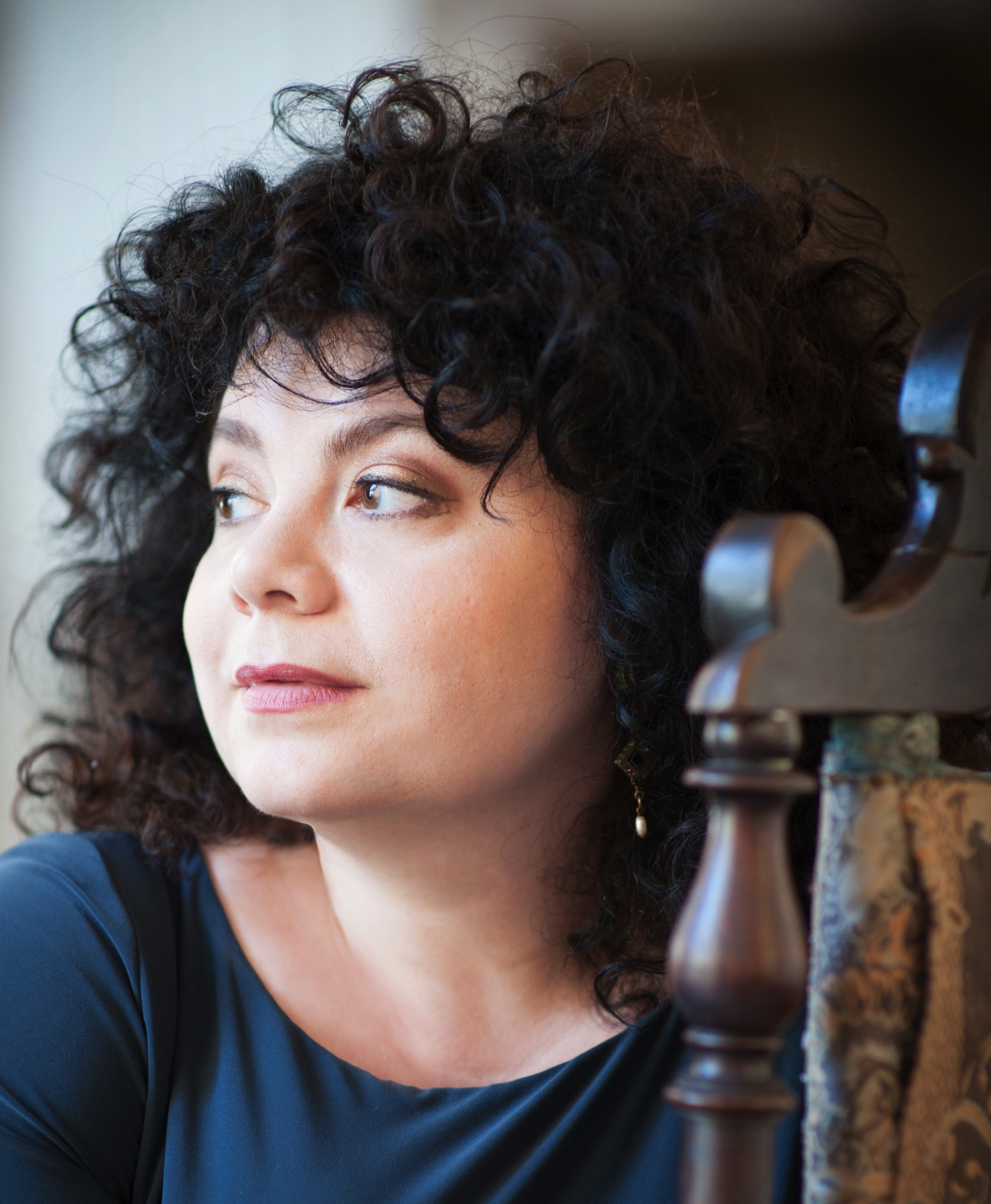A Q&A with Salon/Sanctuary Concerts Founder and Artistic Director Jessica Gould
“…a musical work gives us a rich opportunity to look through a window, as it were, onto a different time…”
By Chris Petitt
My interviews with Salon/Sanctuary artists led me to the engine behind it all, the series’ Founder and Artistic Director Jessica Gould. Jessica and I enjoyed a wide-ranging chat, covering history, programming, origins, future plans, and all sorts of insights into what makes this remarkable series tick. Following is our conversation, ahead of the series finale concert, At the Pleasure of Mazarin, a CD release event with Ensemble L’Aura Soave to be performed at the Church of St. Jean Baptiste on April 28th at 8pm. Click here to reserve a ticket; for more information on the program itself, click here.
CP: Your upcoming program, At the Pleasure of Mazarin, focuses on Cardinal Jules Mazzarin and the music and musicians he brought from Italy to France. Can you tell us more about it? What is so fascinating about him?
JG: Cardinal Mazarin is an intriguing historical figure for many reasons. First, he was an Italian immigrant, born Giulio Mazzarino, who rose to great power in his adopted country of France despite being the frequent subject of ridicule by envious people of lesser ability. Secondly, he had a canny instinct for the use of artistic splendor in the service of the State. Was this because he was Italian and raised on Machiavelli? Perhaps. But what is perhaps most fascinating is that this Italian, through his careful tutelage of the future Louis XIV, molded the golden age of French absolutism, the reign of the Sun King, which he would not live to see. And by importing so many Italian musicians and composers who influenced the French, it could be argued that he single-handedly changed French music forever after.
In the middle of all of this, he was this rather quiet, diligent, loyal, and distinctly uncharismatic individual—not our image of a trendsetter. He parried frequent and vigorous attacks on his authority to die the richest and, after the monarch, perhaps the most powerful man in Paris. There’s something about his story that makes one want to say “So there!”
CP: Yes, I can see that. The New York performance on April 28th will be a CD release event and far from the first time this program has been performed by you and your colleagues of L’Aura Soave. Can you tell us more about the places it’s been presented and what’s on the horizon?
JG: We have had the great honor of performing At the Pleasure of Mazarin, or in its Italian incarnation I Diletti di Mazzarino, at some truly humbling venues. Of course, having the program released on the MV Cremona label is a great honor in and of itself.
Most recently the program was presented last month in Florence at Villa Finaly, a 15th-century villa that serves as the Florentine home of the Sorbonne. It was our performance there in June (of the same program) that earned Salon/Sanctuary Concerts a residency there to conceive programs exploring French and Italian cultural exchange, an extraordinary and inspiring opportunity for which I am profoundly grateful. In 2016, we presented the program at Palazzo Lenzi, which is a 15th-century palace that houses the French Cultural Institute, also in Florence. Upcoming in June, we look forward to performing the concert in Rome as part of the series at a church called Sant’Agnese in Agone, which was built in 1652 and features architectural contributions by both Bernini and Borromini, two great artists who happened to have despised each other. I hope someday we have the chance to perform the program in France as well.
CP: I hope so too! Can you tell us more about the music on the program?
JG: It’s hard to know where to start because I love it all. Some of the most exquisite music on the concert comes from the first Italian opera to be premiered in Paris, Luigi Rossi’s Orfeo. There is an aria each from Orfeo and Euridice, and the way their respective characters are revealed through the music speak of Rossi’s genius as a musical portrait artist. The stunning instrumental selections from the opera are joined by some works by the Florentine Giovanni Battista Lulli, otherwise known as Jean-Baptiste Lully, written as contributions to the Paris performance of Cavalli’s Xerxes, which was, like Orfeo, a Mazarin event.
A couple of works by Giacomo Carissimi are really fascinating to me. Carissimi was a Jesuit priest (Mazarin was educated by Jesuits) who wrote many cantate spirituale at a time when the Catholic Church was trying to reassert its dominance against expanding Protestantism. This period, called the Counter-Reformation, produced ravishing works of art and music in the service of a battle for people’s minds. The texts (as the paintings) had to grab the emotions of the listener or viewer in order to convince him or her of the “truth” of the theological viewpoint it represented. So we have these very dramatic, extensive polemical texts set to fiendishly virtuosic music, in which “Nature” is offended and demands revenge. Nature in this context is of course the Catholic Church, against which any defiance is painted as “un-natural.” That these pieces were most certainly performed by castrato singers, just about the most un-natural phenomenon in the very un-natural world of baroque spectacle, didn’t seem to matter much to anyone. But that gets into the difference between “our” idea of Nature versus “their” idea of Nature, which is material for an entirely different interview.
CP: And I look forward to that discussion for next time. Turning to the series itself, Salon/Sanctuary Concerts has attracted critical notice not only for excellent performances, but for programming that is highly imaginative and thoroughly researched. What inspires you in your programming to seek such an untrodden path? How do you go about your programming and from where do you get your ideas?
JG: It’s always gratifying to have one’s work recognized, and I greatly appreciate the writers who have taken notice of what we do. I guess the impetus for my programming direction came from seeing a lot of concerts of early music in venues that seemed intended for larger forces, larger audiences, and later repertoire. Although we Americans lack the historical span of Europe, I have tried as much as possible to replicate or at least evoke the original context of any given program’s historical origins through the choice of venue that is intimate enough and, to the greatest degree possible, of the same aesthetic world as the music being performed. In terms of my programming, I am inspired by numerous non-musical sources, such as history, language, literature, and art, in addition to the beauty of the music itself.
I think of programming as a form of curating, and I think of the curator’s job as one of pointing out connections that might otherwise be overlooked. For example, if you put the color orange next to the color blue, it will look different than if you put it next to red, because context changes the way the brain perceives color. Similarly, if you present an ancient Jewish Yemeni chant next to a cantata by, say, Barbara Strozzi, you will hear the baroque piece differently than if it were in a standard program with only other baroque works.
The point isn’t to say that Strozzi sought to replicate Hebrew chants, but, in this case anyway, to encourage the listener to imagine a Venice where Jewish immigrants and Italian composers were in close proximity, as I endeavored to do in my From Ghetto to Cappella program that was adopted by Carnegie Hall for their “La Serenissima” series last year. So when you hear something differently, your curiosity might be piqued a bit, and you may be inspired to think about history and music in a different way other than purely historical style or subject, which is a traditional approach to programming.
CP: Is this where the part of the Salon/Sanctuary Concerts mission statement “To view history through the prism of music” comes in?
JG: Well, yes, because a musical composition, like a work of literature or visual art, or the product of any other creative endeavor, is as much the product of a specific historical moment as it is the output of an individual’s genius and vision. So a musical work gives us a rich opportunity to look through a window, as it were, onto a different time and learn a great deal. It’s like the tip of the iceberg.
CP: Are all the concerts on the series of your own devising?
JG: Definitely not. For one thing, I think I would collapse! But the actual reason I welcome other programs is to present straightforward evenings of great musical masterworks, such as the Goldberg Variations, which harpsichordist Davide Pozzi performed brilliantly in January at the Italian Consulate, to remind us of our responsibility to keep great works alive through great performances. And when someone has an inspired original program, the series can only benefit from its inclusion, as we did when the wonderful ensemble Galileo’s Daughters performed their Perpetual Motion project, an interdisciplinary program devoted to Galileo, as part of our FIAT LUX mini-series at the beginning of March, or when multi-instrumentalist Corina Marti joined us from Basel to offer a view on the medieval idea of Mundus Inversus, or world turned upside down, through a beautifully performed concert of works from and connected to the satirical medieval work Le Roman de Fauvel.
CP: You are both a soprano and an Artistic Director. That’s not a typical combination. Can you tell us a bit about what it is like to approach the music from the angle of a performer as opposed to the perspective of the person who makes the event happen?
JG: I think it is possible to see an Artistic Director as a creative artist and a performer as a re-creative artist. A singer who programs is not exempt from the responsibilities of a singer who has been engaged by someone else to perform. However, even if I am in the position of performing someone else’s programming, as I did in the I Viaggi di Caravaggio concert and CD, at the invitation of lutenist Diego Cantalupi, a thorough investigation into the historical background of the repertoire can only help my performance, or anyone’s. As soon as I start on a project as a performer, I read everything I can about the repertoire I’ve been assigned. As soon as I begin to envision an historical exploration or interdisciplinary program, (if I’m singing in it) I take out the music and get to work, just like anyone else. So I guess you could say that the two jobs aren’t that separate for me after all.
CP: But do you find resistance to the idea of a soprano in a leadership position?
JG: Despite all the advances our society has made in so many areas, it seems in many corners of the culture of opera and classical vocal arts, women are still supposed to be passive and wait to be chosen. And that is something that is going to have to change if classical/early music wants to progress on the right side of history. The resistance to woman conductors, for example, just starts to look downright peculiar, given all the progress going on for women in the rest of the world.
CP: And let’s hope it changes quickly. Moving from the future to the past, how did the series come to be in the first place?
JG: The origin story of Salon/Sanctuary Concerts involves both tragedy and comedy. A little over nine years ago, a friend of mine invited me to sing on a concert that was to be a benefit for brain cancer research. Now this disease has taken members of my family, as it had his, so I was eager to participate. The original idea for the performance was a bunch of singers and a pianist. I suggested that the performance might make more of any impact if it involved an orchestra and arias, and I suggested a friend of mine for the job who happened to be the young maestro of a prominent New York period-instrument orchestra. During the rehearsal period, my conductor friend suffered a family emergency and told me I had to take the reins and program everything. I said “I don’t know how to conduct.” He said “You don’t need to conduct. Just choose the repertoire for everyone.” I said “What if they hate me?” and he said “If they do they’ll get over it.”
So the performance went very well and raised lots of money for this brain tumor research foundation. The next thing I know, I am summoned to a law office for a morning meeting with the lawyers of the foundation. My first thought is “What did I do wrong?” To the contrary, I arrived at this meeting on the 750th floor of some tower in midtown with a lovely view of Ohio, and a lawyer said to me “We are very pleased with your work and would like you to run a series of this kind of music. How much do you need?” and I responded “I have no idea because I am a singer and I’ve never run anything.” So this lawyer said “Would you like to think about it and get back to us?” and I said yes.
So eventually, the foundation discontinued its support because regular concerts don’t tend to bring in money but rather, do the opposite. So I wrote to some foundations to request support for the season and the rest, as they say, is history.
CP: And quite a history it’s been! For someone who doesn’t appear to have started with a great deal of confidence, you have achieved impressive staying power, critical recognition, and a formidable array of institutional collaborations.
JG: I don’t think Salon/Sanctuary would be where it is today without its institutional partnerships, and it’s always profoundly gratifying as well as humbling to me when a program that starts as an idea in my head ends up on the schedule of Carnegie Hall or the Sorbonne or at Palazzo Bardi, where the men of the original Camerata Fiorentina gathered and ended up inventing opera. In New York, our most frequent collaborating partner is NYU Casa Italiana of NYU, which has helped us so much in everything we do with them.
CP: You mention a gathering of men. Following up what we touched on earlier, sexism in the arts is in the news these days, and when most people hear “Artistic Director” as applied to a classical music series, a male conductor or instrumentalist is often the first image that comes to mind for many. Have you found obstacles or resistance from being a soprano who is also a Founder and Artistic Director, or simply from being a female Artistic Director?
JG: I think we are at a critical moment in our history when decades-long questioning of male privilege in various fields is finally beginning to bear fruit. Are there unenlightened individuals in our field who think only men can hold authority in classical music? Of course. Are these individuals only men? Sadly, no. If someone decides to address me in a patronizing manner, do I assume it is because of sexism? Who knows? But the walls are crumbling and we are here to witness it, such as in the career of the extraordinary soprano and conductor Barbara Hannigan, and in countless other female pathbreakers who follow in the footsteps of Barbara Strozzi by doing the unprecedented, by simply going about their work, daily and methodically, very unglamorously, year after year, because that is how great work gets done and lasting recognition is achieved.
CP: An extended season in Florence, Italy became part of your annual schedule back in 2015, with concerts in some of the most historically significant as well as stunning venues in the Tuscan capital. How did this come about? Your level of access is unusual for an American, and it seems to grow every year.
JG: When I was 14 years old I went to Florence for the first time and my head kind of exploded from all the history and splendor. I was lucky to have attended a high school where Italian was taught, and I feel like I have been studying the language ever since I turned 15. I have now reached a level of comfort in Italian which allows me to be there without needing to speak or write in English. To be able to present original programs that honor the history of this city and its place in the history of Western Civilization and artistic achievement feels like a fulfilled promise to my 14 year-old self. After performing some concerts there in various years on various series, I decided to initiate an extended season in Florence out of a desire to share my love for the city and its history through musical programming. As word about Salon/Sanctuary’s programming got around, we received more invitations for partnerships from various extraordinary places, which has inspired me to come up with more original programs to honor these places and their history. So this is how it grows.
CP: What’s coming up for Florence 2018?
JG: We return to Palazzo Bardi for a program honoring Giulio Caccini in this anniversary year of his death, featuring the gifted young tenor Riccardo Pisani. The Gondi family has honored us with an invitation to perform an original program at Palazzo Gondi dedicated to their family’s history in France. Other performances include a program from our New York season which will be performed at both NYU Villa La Pietra and Villa Finaly.
CP: Salon/Sanctuary is one of the more prolific presenters of historical performance in New York City history, given its small size and relatively small budget. Some people out there are wondering how you do it. Where does the energy come from?
JG: Sometimes I don’t even know! I hope someday to have a staff to help me out! But seriously, I am inspired by great ideas and the use of musical performance in sharing them. And I will go to great lengths to bring a great program to fruition if I believe in it. It’s hard work and there have been many challenges, but it never fails to motivate me, and I have yet to meet a challenge that turns out to be insurmountable, even if it feels like that at the time.
CP: Well, more power to you! Thanks so much for speaking with me today, and best of luck with all that lies ahead!
JG: Thanks for listening!
Tickets can be reserved online at www.salonsanctuary.org or by calling 1-888-718-4253.
New York moves fast. Don’t miss a thing. Sign up for Thought Gallery’s weekly Curriculum, the best of smart NYC delivered right to your inbox.

